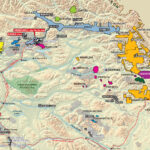Applications
Because of its corrosion resistance, a major use of palladium is in alloys used in low voltage electrical contacts. When it is finely divided, palladium forms a good catalyst and is used to increase hydrogenation and dehydrogenation reactions.
Palladium is used extensively in jewelry-making in certain alloys called “white gold.” It may be alloyed with platinum or substituted for it. It is used in watch bearings, springs, and balance wheels, and for mirrors in scientific instruments.
In 1990, most catalytic converters relied on platinum to reduce emissions from car exhausts but, while this metal is still important, palladium is now the main ingredient because this is even more efficient at removing unburnt and partially burnt hydrcarbons from the fuel.
Palladium is nowadays more and more used in electrical appliances such as wide screen televisions, computers and mobile phones, in the form of tiny multi-layer ceramic capacitors, of which more than 400 billion are made each year.
For use in dentistry it is alloyed with silver, gold, and copper. Palladium salts are used in electroplating.
Palladium in the environment
Specimen of uncombined palladium are found in Brazil, and there are some minerals rich in palladium, but most of it is extracted as a by-product form nickel refining.
Palladium is found as the free metal associated with platinum and other platinum group metals in Australia, Brazil, Russia, Ethiopia, and North and South America, as well as with nickel and copper deposits (from which it is recovered commercially) in Canada and South Africa.
